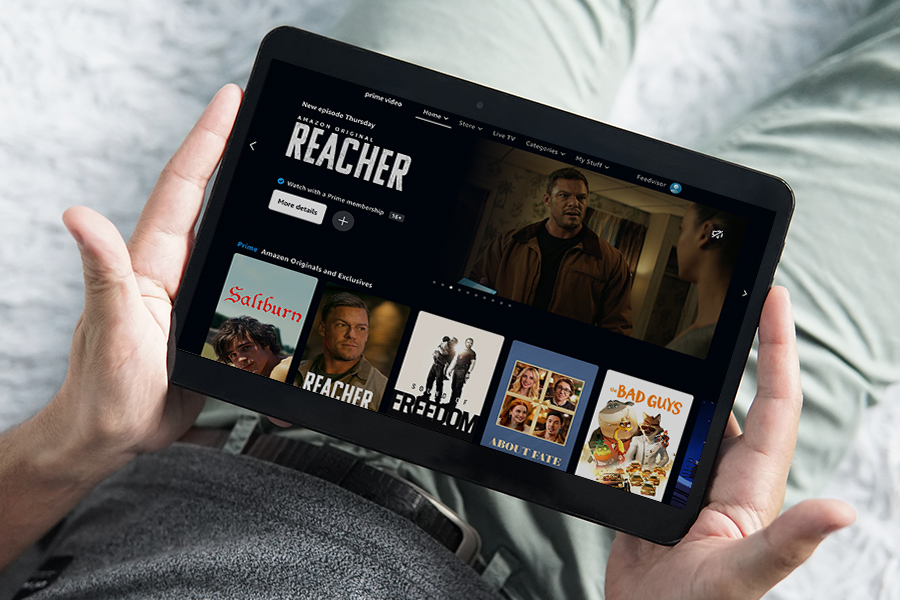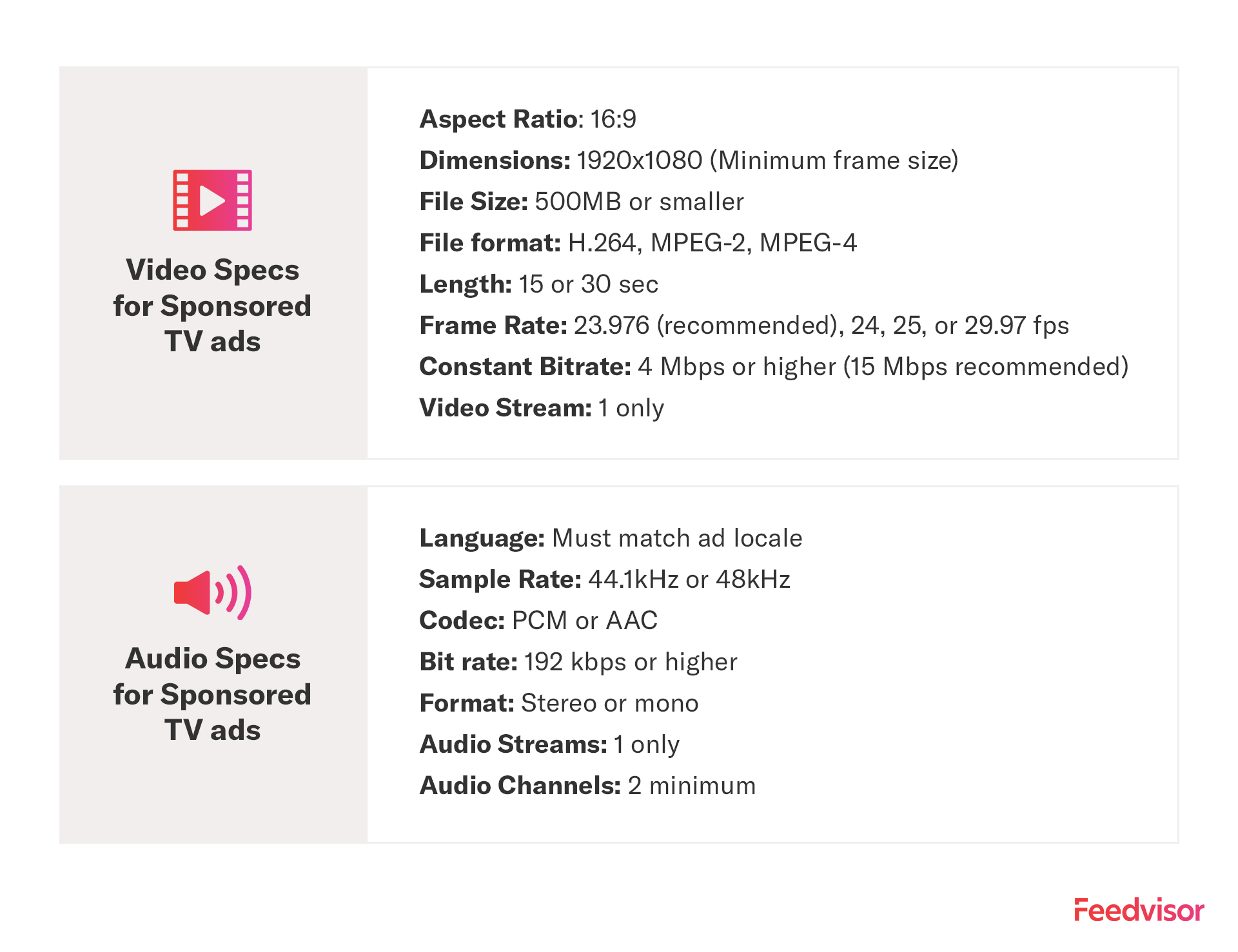Resources - Blog
From Couch to Cart: The Influence of Sponsored TV Ads

In an era where consumer attention proves more elusive than ever, Amazon remains a trailblazer in e-commerce advertising. The latest addition to its arsenal is Sponsored TV ads, unveiled at the Unboxed 2023 event. This self-service streaming ad platform has the potential to revolutionize the advertising game, particularly for small to midsize brands.
As brands gear up to elevate their advertising game in the new year, adding a channel like Sponsored TV is the perfect move. To help brands, retailers, and sellers leverage this new platform, we explore Sponsored TV’s innovative features and provide insights strategically aligned with Q1 and the future of e-commerce advertising.
What is Amazon’s Sponsored TV Ads?
One of the most notable announcements from Amazon’s Unboxed 2023 was the beta release of Sponsored TV: a self-service streaming ad solution that has the potential to be a game-changer for small to midsize brands. With no minimum spend or upfront commitments, the service will enable brands of all sizes to get onto Streaming TV services, including Amazon Freevee, Twitch, and Amazon Fire TV apps — without breaking the bank.
Sponsored TV’s features make for a powerful, accessible platform for brands of all sizes. Among them, the most note-worthy include:
- Flexible budget: Traditionally, connected TV has been reserved for big brands; streaming campaigns typically require a large minimum spend or upfront commitment. Sponsored TV, on the other hand, does not require a minimum spend or upfront commitment, breaking down the barrier to entry.
- Creative options: Advertisers can either use their own existing assets or take advantage of Amazon Ads Creative Services. There is a caveat: Amazon’s professional service requires a minimum ad spend of $15K.
- Interactive elements: From QR codes to remote-controlled actions, Sponsored TV’s ads incorporate interactive elements to better engage consumers.
- Machine-learning powered optimization: Sponsored TV is powered by Amazon’s machine-learning optimization models, which pull first-party shopping and entertainment signals to create ad experiences that resonate with viewers.
Sponsored TV Ads: What Do They Mean for the Future of E-Commerce?
Amazon commands a huge portion of today’s retail media spend — now the third-largest digital advertising platform in the U.S. behind Google and Meta. Thanks to the e-commerce giant’s wealth of customer data and traffic, Amazon’s advertising has become a must-have for retailers, sellers, and brands alike.
With the release of Sponsored TV, Amazon is taking its advertising a step further. Previously, Amazon offered one route for brands to appear on TV — via their DSP. Like others, Amazon’s DSP comes with a costly minimum spend. Programmatic TV advertising, at large, has typically been reserved for splashy, large-scale campaigns. Think of the Super Bowl, for instance.
Amazon’s Sponsored TV hopes to change this. With no minimum spend or upfront requirement, brands of all sizes will be able to leverage the service to engage untapped audiences beyond traditional screens.
What implications does this new release have for the larger e-commerce landscape? Amazon’s expansion to include more brands on streaming TV signifies another stride toward e-commerce brands increasingly adopting streaming TV. While display advertising is the bread-and-butter for many brands, streaming TV is emerging as a highly sought-after channel. Unlike many video ads, streaming ads are mostly non-skippable — and thus harder to ignore. Better still, TV advertising has a halo effect across sales channels — an Accenture study found that TV lifts digital ROI by 22%. In other words, those exposed to a TV ad are more inclined to respond to subsequent digital ads and ultimately convert.
With Amazon’s Sponsored TV ads, brands of all sizes will be able to harness the full potential of streaming TV, amplifying brand visibility, driving sales, and fostering engagement.
6 Tips and Tricks for Leveraging Amazon Advertising in The New Year
In Q1, an increasing number of large and small e-commerce retailers will likely venture into connected TV. Now is the time for brands to plan how they can integrate new channels like Sponsored TV into their advertising strategy.
How can brands effectively add Sponsored TV ads to their existing media mix? For one, be careful to not treat the channel as its own silo. Instead, think about how Sponsored TV ads can fit into your overall strategy. Your advertising campaigns across channels have different purposes but work towards the same overarching goal.
In the same vein, ensure your ads are consistent across channels — your brand’s narrative should resonate consistently across all consumer touchpoints. Maintain a consistent look across channels, whether it’s visuals, calls to action, or other ad elements.
Crafting ad creative can be a significant entry barrier. A helpful tip to avoid hefty agency costs is repurposing existing video content. Remember that Sponsored TV has specific video specs of 15 or 30 seconds, while common display video specs vary from 6 to 45 seconds. Adjusting your video length may be necessary if you opt to repurpose your creative.

Set your expectations accordingly. Treat your streaming budget as you would your marketing dollars; recognize that Sponsored TV ads are a long-term commitment that might not yield immediate ROI. For more performance-oriented goals, consider options like Sponsored Products or Sponsored Brands display ads—they could be your optimal choice.
Explore how to measure your streaming performance best. While campaigns should meet the same overarching goal, the performance metrics for each channel will vary. For instance, impressions and product detail page views are viable metrics for a Sponsored TV campaign. ROAS, on the other hand, does not work well here. Amazon uses a last-touch attribution model, giving the greatest weight to the final touchpoint. Because TV ads often serve as the initial touchpoints in a customer’s journey, they’re less likely to be credited.
Finally, work with a trusted tech partner who understands the nuances of Amazon’s advertising, offering insights on everything from spending levels to anticipated performance, distinguishing between Sponsored TV, Sponsored Brands, and beyond. Moreover, opt for a partner with enhanced reporting capabilities. TV lacks the same measurability as other channels, demanding a wealth of data-driven insights. Notably, Sponsored TV’s reporting may not match the robustness of the DSP, underscoring the importance of a partner who can supplement these gaps with their own data.
Final Thoughts
Let these insights guide your strategies, particularly as we dive into Q1. The journey ahead is both exciting and transformative, and Sponsored TV is your ticket to not just keeping pace but leading the charge in the dynamic world of e-commerce advertising. Ready to take your Amazon advertising strategy to the next level? Explore our services free for 14 days.

